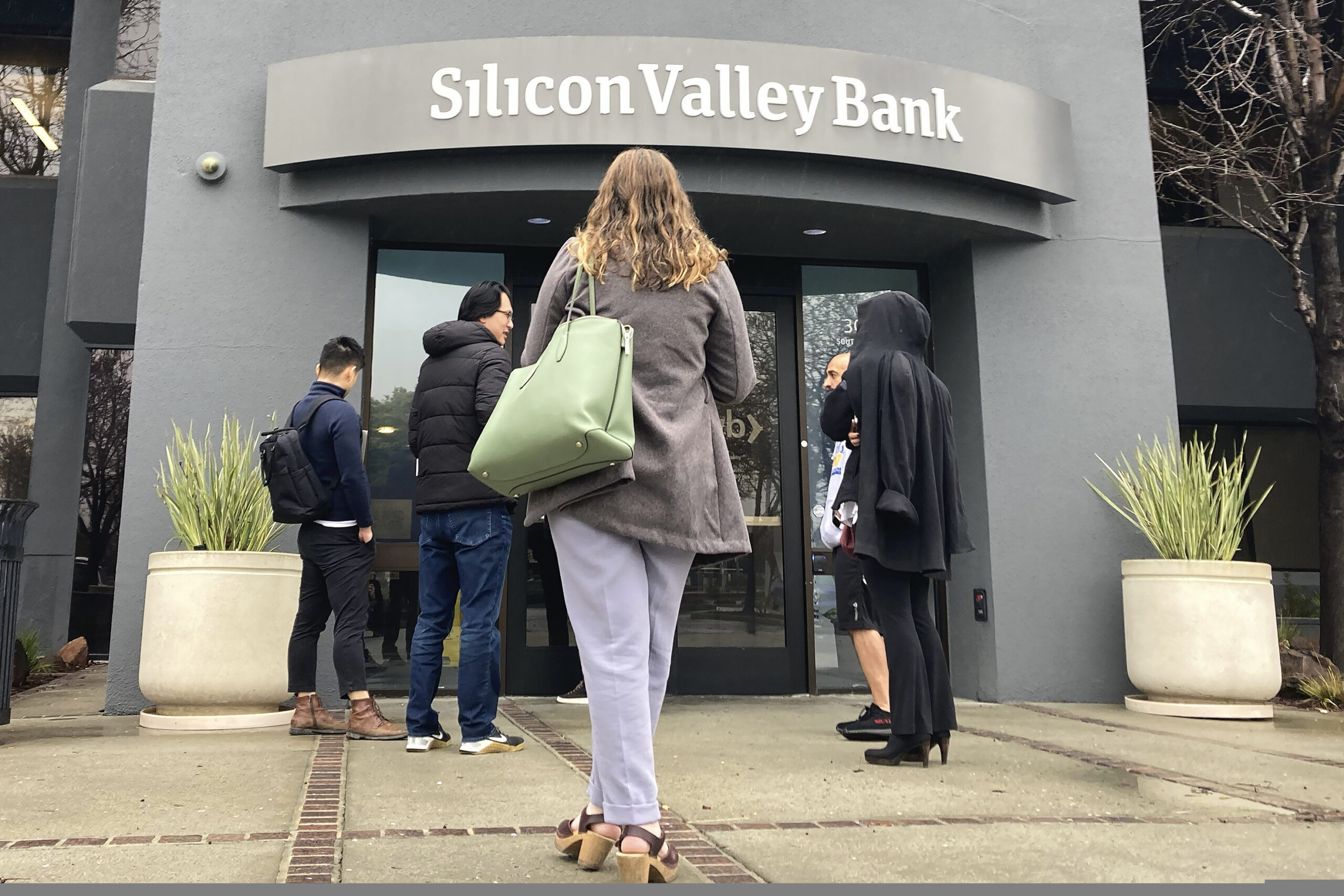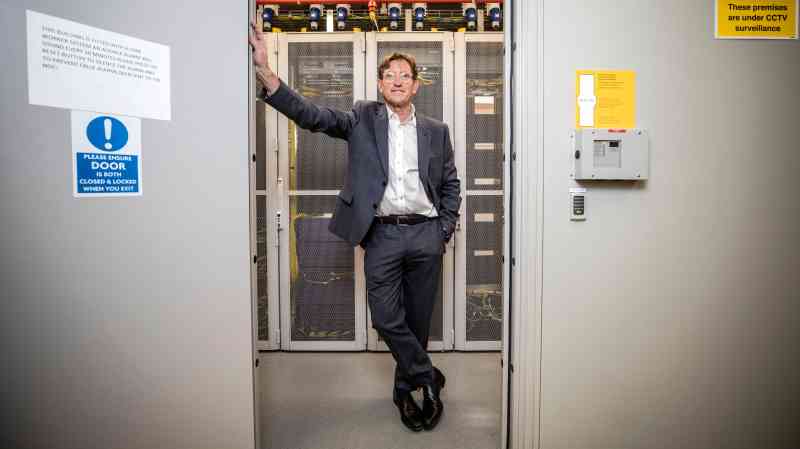‘SVB sale to HSBC was like nothing I’ve ever experienced … or want to again’
It was teatime on Friday, March 10, 2023. Rather than winding down for the weekend, some of Britain’s leading entrepreneurs were panicking, trying to get a limited place on a video call. Those who couldn’t desperately pressed refresh.
They were afraid and angry. Clamouring to know what was going to happen to their cash, held with Silicon Valley Bank (SVB) in the UK, as the news broke that its American parent business had collapsed after days of teetering on the brink.
The meeting had been hastily convened by Saul Klein, the veteran London investor. The link was spread on Whatsapp groups. “There was a real sense that companies who were solvent on Thursday would not make payroll on Monday”, Klein said.
Erin Platts, the American boss of SVB UK, reassured the anxious group that their money was safe. The UK bank was a separate ring-fenced entity, she said; its balance sheet was sound.
It was not so simple. By midnight, the Bank of England had announced its intention to place SVB UK into an insolvency procedure. Customers were staring into the abyss. Only £85,000 of depositors’ cash would be protected by the government scheme. Most accounts were way above this.
So began a traumatic weekend that will live long in the memory of those who saw their bank balances flash before their eyes along with the possible loss of their businesses.
The crisis had begun on the Wednesday, when the US-listed parent company revealed that it had suffered a $1.8 billion loss on the sale of its bond portfolio. This triggered a 60 per cent fall in its shares on the Thursday; customers pulled out cash and regulators moved in. The largest US banking failure since 2008 eventually saw the Biden administration guarantee all deposits.
• HSBC’s Noel Quinn: ‘I had to save SVB — it’s a business of the future’
Silicon Valley Bank was founded in 1983 and went public in 1988. It has had a UK presence since 2004. At the end of December 2022, SVB held $175 billion in deposits, according to US regulators. It claimed on its website that “44 per cent of US venture-backed technology and healthcare IPOs bank with SVB.” But this tech-focused bank could do little in the face of an old-fashioned bank run.
In the lead up to the Friday, those British customers who could withdrew cash as fear coursed through the UK’s tech community. Investors advised companies to get money out.
Warm and frank, Platts has been with the bank since graduating from college after working her way up from a role in customer services. Beneath her poised exterior, reliving that weekend is clearly traumatic.
Does she wish she had not told customers their funds were safe that afternoon? “You can only share the information that you have and be transparent about that at the time, give people the information that you have and let them make the best decision for their companies”, she says.
Andrew Bailey, the Bank of England governor, later explained that he judged the UK operation could not have survived as a viable business after the collapse of SVB in the US because of its reliance on its parent for technology and systems, including payments infrastructure.
Platts said: “We didn’t see significant enough outflows that we weren’t in a position not to be able to open up our doors on Friday morning. So we did. On that Friday, we opened up new accounts, we funded loans, we took deposits, and we definitely had outflows.”
It definitely did. British tech companies took £2.9 billion out of SVB UK that day, the Bank of England revealed, 30 per cent of its deposit base.
Hardly a household name, the bank’s struggle seemed to have minor implications in Britain. When the Bank of England announced that it was being placed into an insolvency procedure it said, “SVB UK has a limited presence in the UK and no critical functions supporting the financial system”.
Yet more than 3,000 British tech firms had about £7 billion in deposits with the bank’s UK subsidiary. Many of these companies were not yet generating revenue, dependent on the funds to pay bills, wages and suppliers.
That weekend, it took a while to make anyone pay attention.
British tech companies went into overdrive, drumming up interest in the media and writing to politicians to raise awareness of their plight. Indeed, 140 tech founders representing £2.7 billion of investment and 8,000 employees signed a letter to the chancellor, calling for help. Dom Hallas, executive director of the Startup Coalition, started a group called “Save UK Tech”.
Platts and her team set up a war room in their City offices. A firesale had begun. Rothschild was called in as an adviser. The clock was ticking to Monday morning. At that point saving the UK bank, she said, “was not a slam dunk”.
Genuine suitors ran the rule over the bank, while others poked their noses in out of curiosity, “time wasters and opportunists” looking for a PR opportunity. “I have a naughty list”, Platts smiles wryly, “the whole thing was like nothing I’ve ever experienced and I hope to never experience again”.
In other meeting rooms, executives tried to reassure distraught clients; “We had to do the best that we could to give them any information, but at that point we had very limited information to share”.

Finally, Platts felt the worst was over, during a due diligence call with HSBC which had by then emerged as the front-runner. “We were sharing some of our metrics around the business, performance, profitability, client base, credit quality. I saw a really senior person drop off the call and I thought — he’s going to go and get approval for this. That transpired to be the case. It will be burned in my memory forever”.
She left for home at 2am on the Monday and just a few hours later the sale to HSBC for a nominal £1 was announced. Only then could SVB UK’s staff be told. It brought a provisional gain of $1.6 billion to the bank, “a good deal by anyone’s standards”, Platts shrugged.
What role did the government play? “It was very much a private transaction between us and HSBC. But I think there was a lot of support behind the scenes to make sure that any eventuality was covered”. One Treasury insider said that its role was pivotal: “We spent the weekend understanding the exposure and approaching white knights”.
The sale was not the end of SVB UK’s problems: “We needed to move extremely quickly to extricate ourselves from the old parent and embed into HSBC’s technologies and platform”, Platts explained. A process that should have taken 18 months was done in 120 working days.
HSBC played a part in convincing many customers to stay, as one explained, because of the “inconvenience of moving”. Toby Mather, chief executive of Lingumi, said: “HSBC is a big, trustworthy, grown up bank. But we did also diversify where we held our cash”.
HSBC Innovation Banking revealed $8 billion of loans and advances to customers and $6 billion of deposits in customer accounts, in HSBC’s annual report. It contributed $0.5 billion of revenue and $0.2 billion to the HSBC Group’s profit after tax, from the sale on 13 March to the end of 2023.
Entrepreneurs who have stayed with the bank are positive. “Their platform is better than what SVB had! No complaints here and we plan to stick with them for our daily banking”, Mather said.
“If I wound the clock back to March of 2023”, Platts reflected, “I couldn’t have wished to be in a better position that we’re in now”.
The tech bros in working with “the grown-ups” in suits provided an unexpectedly happy ending, not to mention a “good deal” for HSBC.




Post Comment